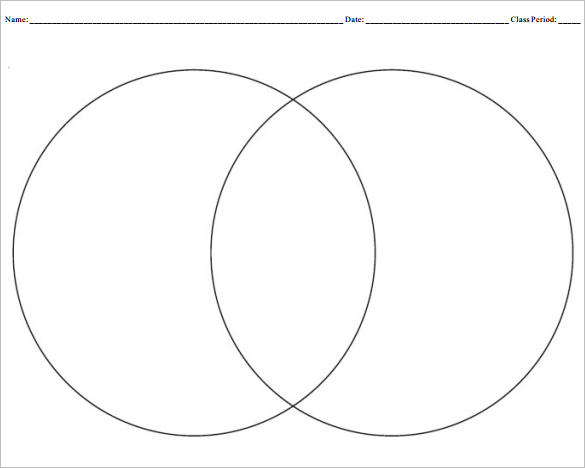Year 3 students will be learning about sustainability. To begin this unit, students will identify two separate locations. These locations will be local and relevant to the students’ lives. The first location will be from around the school (e.g., playground, quadrangle, oval), and another that has significance to them outside of the school environment (e.g., park, football field, shop). Using a Venn-diagram, students will compare the similarities and differences of the two places on characteristics such as their physical characteristics, what happens in these locations, what people live/work in these places, and what feelings they have when they are there. You can support their learning by helping take photos of these locations or helping students with comparisons of the characteristics. I believe that parents should support my teaching and the activities happening around the school (Marsh, Clarke, & Pittaway, 2014).
 |
| Venn Diagram |
When this has been completed, the question “how would you feel if your ‘out of school’ location was polluted with rubbish?” will be posed. Students will reflect on this question, discussing how they would feel and what they would do if this were to occur. During a whole class discussion, students will present their ideas about how they would feel and what course of action they would take. The attention will then be turned to why it would be important to protect places that have significance to others. This leads to discussing how we could protect the school environment from litter, and exploring how the class could participate in a school-wide project to clean up the school.
 |
| (Buckley, 2014) |
Students will be assessed on this informally through their participation in the school project to clean up the school. Things such as their discussions in class about possible ways to implement their ideas and their participation in helping clean up the school will be used for assessment. This is to help me make judgements about student learning (Brady & Kennedy, 2012). Students will be formally assessed on their comparisons of the similarities and differences of their chosen locations. Additionally, their reflections will be used for assessment.
The Australian Curriculum, Assessment and Reporting Authority [ACARA] (2017b) identify three cross-curriculum priorities (CCP) that are addressed within learning areas to add depth and enrich the learning experience for the students. One of the CCPs is sustainability, which refers to our ongoing capacity to maintain all life (ACARA, 2017c). By integrating sustainability into HASS, students develop skills, knowledge, and values that develop their contributions to sustainable living (ACARA, 2017c). Working towards sustainable futures can occur at various levels. Including global, national, community, and personal, to address social, environmental, and economic issues (Hoepper, Cutter-Mackenzie, & Gilbert, 2017).
In this unit, students will be learning about the similarities and differences between places in geography, while also learning about participation in the community in civics and citizenship. Integrated within this is the CCP; sustainability.
 |
| (ACARA, 2017a) Remember you can click to enlarge. |
Mr Hudson
References
Australian Curriculum, Assessment and Reporting Authority. (2017a). The Australian Curriculum: Humanities and Social Sciences. Retrieved from https://www.australiancurriculum.edu.au/download?view=f10
Australian Curriculum, Assessment and Reporting Authority. (2017b). Cross-curriculum priorities. Retrieved from australiancurriculum.edu.au/f-10-curriculum/cross-curriculum-priorities/
Australian Curriculum, Assessment and Reporting Authority. (2017c). Sustainability. Retrieved from australiancurriculum.edu.au/f-10-curriculum/cross-curriculum-priorities/sustainability/
Buckly, D. (2014, March 4). Gallery: Clean up Australia day. Forbes Advocate. Retrieved from https://www.forbesadvocate.com.au/
Hoepper, B., Cutter-Mackenzie, A., & Gilbert, R. (2017). Sustainability. In R. Gilbert & B. Hoepper. Teaching humanities and social sciences: History, geography, economics and citizenship in the Australian curriculum (6th ed., pp. 428-457). South Melbourne: Cengage Learning Australia Pty Limited.
Hoepper, B., Cutter-Mackenzie, A., & Gilbert, R. (2017). Sustainability. In R. Gilbert & B. Hoepper. Teaching humanities and social sciences: History, geography, economics and citizenship in the Australian curriculum (6th ed., pp. 428-457). South Melbourne: Cengage Learning Australia Pty Limited.
Marsh, C. J., Clarke, M., & Pittaway, S. (2014). Marsh’s becoming a teacher (6th ed.). Frenchs Forest, NSW: Pearson Australia.








